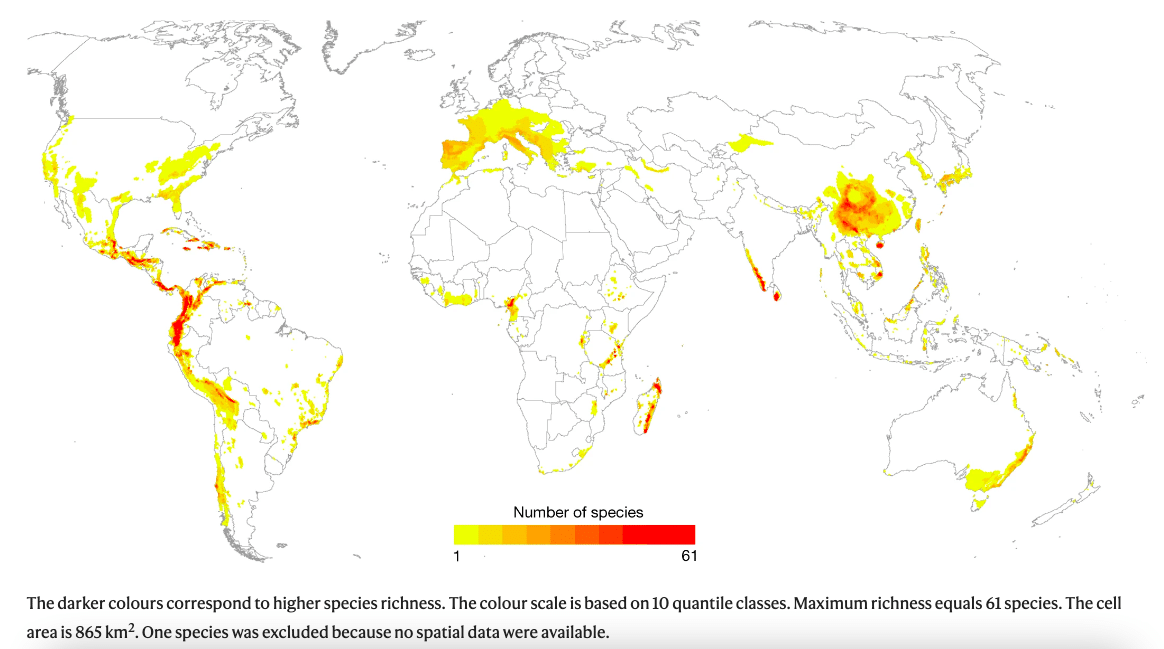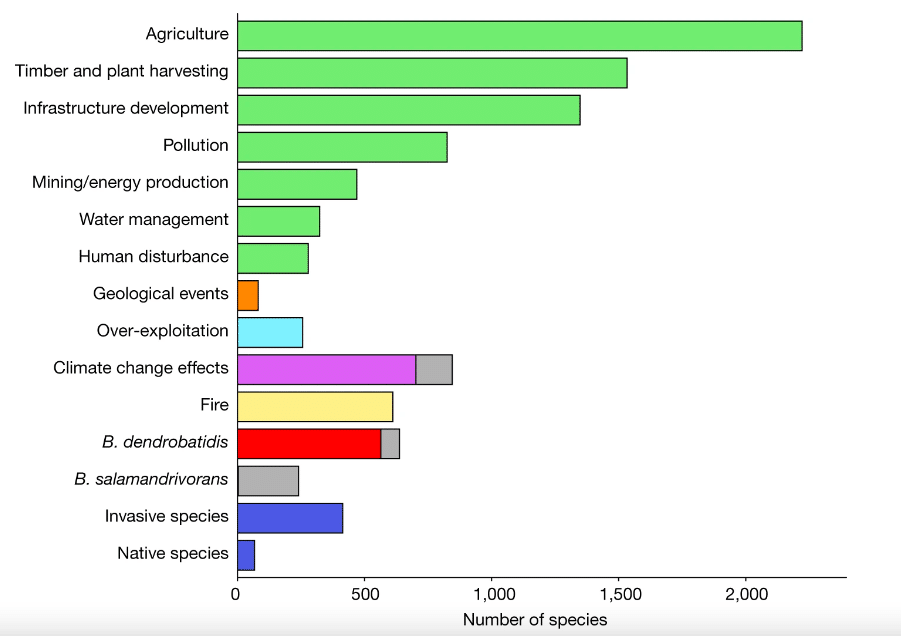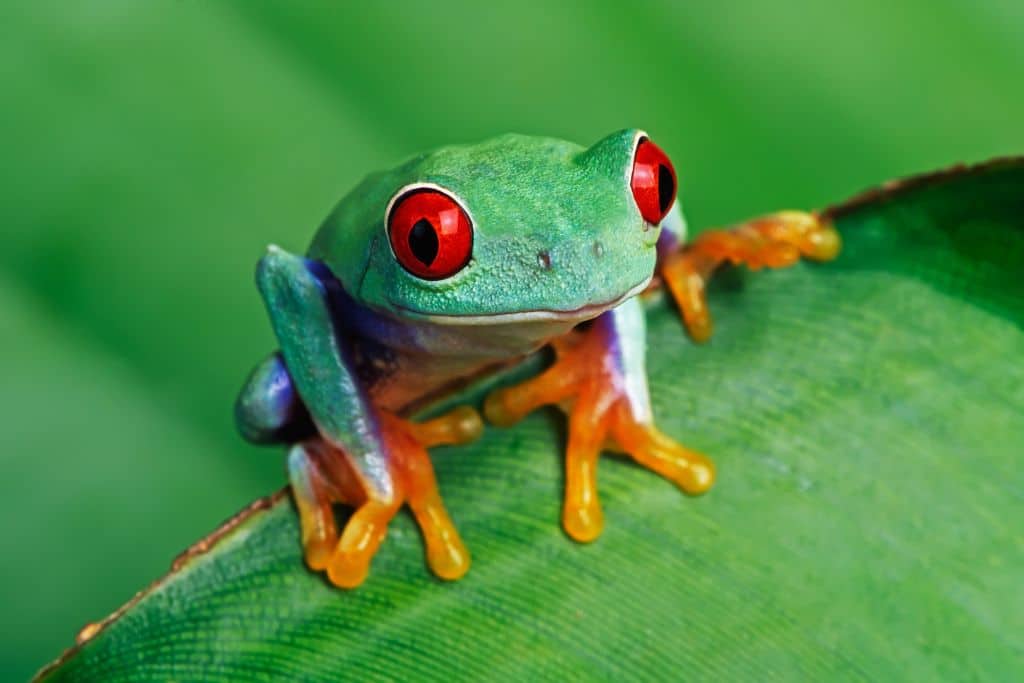According to a recent assessment, amphibians are the second most threatened group and the most threatened vertebrate class in the world, as increasing threats such as global warming and loss of habitats led to a rapid status deterioration in the past four decades.
—
The world’s amphibians are in dire need of protection as 40.7% of all species are threatened with extinction, a new study has found.
According to the report published Wednesday in the scientific journal Nature illustrating the findings of the second Global Amphibian Assessment (GAA2), the status of amphibians is deteriorating globally, especially in the Neotropics, one of six major biogeographic areas of the world that extends south from the Mexican desert into South America as far as the subantarctic zone.
They are found in all regions of the world excluding Antarctica, though species like frogs and toads are particularly diffuse and diverse in humid tropical environments. The highest percentage of threatened species is concentrated in the Caribbean islands, Mesoamerica, the Tropical Andes, the mountains and forests of western Cameroon and eastern Nigeria, Madagascar, the Western Ghats, Sri Lanka as well as central and southern China.
More than 1,000 conservationists and experts worked together to assess 8,011 species of amphibians – vertebrates that inhabit both aquatic and terrestrial habitats – figuring on the Red List of Threatened Species compiled by the International Union for Conservation of Nature (IUCN), the global authority on wildlife extinction risk.
There are three major groups of amphibians: salamanders and newts (60% threatened with extinction); frogs and toads (39%); and the limbless and serpentine caecilians (16%). The new assessment also suggests that up to 222 amphibians could be extinct.

The distribution of 2,873 globally threatened amphibian species. Image: Nature.
Amphibians play an important role in reducing the number of insects that destroy crops and transmit diseases. Because they are extremely sensitive to changes in the environment, they are often great indicators of ecosystem health. When frog and other amphibian species are in trouble, it is a warning that the entire ecosystem is in danger.
Frogs are also keystone species, species that holds the ecosystem together. In the food chain, they play the roles of both predator and prey. They are a great pest controller as they feed on insects such as mosquitoes and flies. In turn, they provide food for bigger animals like birds and reptiles.
Among the causes of population decline, researchers identified climate change, which is responsible for 39% of status deterioration since 2004, and habitat loss – driven by agricultural activities, timber and plant harvesting as well as infrastructure development – responsible for about 37% of status deterioration.
“Amphibians are particularly sensitive to changes in their environment, in part because they breathe through their skin,” said Kelsey Neam, Re:wild conservationist and co-author of the study.
“So the effects of climate change – increased frequency and intensity of extreme weather events, changes in moisture and temperature, sea-level rise and fires – can result in the loss of key breeding sites, increased mortality, habitat degradation, and habitat shifts that make it harder for amphibians to find suitable places to live,” the conservationist added.

The types of threats affecting amphibian species in threatened categories, including climate change and habitat loss. Image: Nature.
The first Global Amphibian Assessment (GAA1), carried out in 2004, had already revealed the daring state of this class of vertebrates, which was mostly blamed on habitat loss, degradation, and over-exploitation. At the time, only 5,725 species of the 8,615 described species figured on the IUCN Red List, and 2,788 of them were found to be globally threatened.
The new assessment calls for a “massive scale-up” of conservation efforts to stop and reverse population decline, including resource mobilisation to find missing or lost species, protection of habitats, and breeding programmes for future reintroduction.
“Amphibians are our allies in understanding the health of our planet,” said Jennifer Luedtke, co-coordinator of the IUCN Amphibian Specialist Group’s red list authority and lead author of the study. “When we protect and recover amphibians, we protect and restore terrestrial and aquatic ecosystems, we safeguard the genetic diversity of our planet, and we invest in a future in which all life – including human life – thrives.”
You might also like: One in Six Species in the UK at Risk of Extinction, State of Nature Report Warns


















